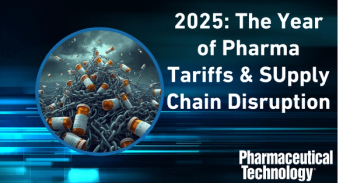
- Pharmaceutical Technology May 2025
- Volume 49
- Issue 4
- Pages: 34
Complying with European versus US GMPs
While global harmonization exists, there are still differences between the US and European GMP requirements that manufacturers should know, says Siegfried Schmitt, PhD, vice president, Technical at Parexel.
Q: We understand that the European Union’s good manufacturing practice (GMP) regulations are quite similar to the US Code of Federal Regulations (CFR). Can you explain some key differences?
A: You are correct that there are many similarities, not least because the United States and the EU have long worked towards global harmonization of GMP regulations. GMP regulations in one form or another have been around for half a century or more, so there has been plenty of time for alignment. The differences in the two regulatory systems are certainly twofold: the specific wording and requirements aren’t identical, and the two entities (US and EU) themselves are distinctly different.
Whereas the US has one CFR that applies as is in all US States, the EU has a regulatory system that is based on Union law and the laws of the 27 Member States (MS). Thus, the EU regulations are only harmonized to some degree, particularly in their interpretation, resulting in many member-state specific requirements and procedures.
Differences between the two regulatory systems are also in their structures. US 21 CFR 211 describes GMP for finished pharmaceuticals in the US. To find the equivalent regulations in the EU, it is easiest to go to EudraLex–Volume 4–Good Manufacturing Practice (GMP) guidelines (1). The EU laws are directives, which need to be transposed into national law in the MS. Though EudraLex provides the consensus interpretation of the directives, each MS can and likely has interpreted some parts slightly differently.
A distinct difference exists with regards to drug product release (to the market). In the US, this is under the authority of the quality control unit (21 CFR 211.22), whereas in the EU this can only be performed by a Qualified Person (QP) (2). The QP can be a member of the quality unit, or even be an independent consultant, depending on the applicable national or regional legal requirements. For certain products (e.g., blood products), an additional release by the Official Control Authority Batch Release is required (3). And should you be confused about the quality unit terminology, please see the article, “The Role of the Quality Unit” (4).
A large number of products are aseptically manufactured. The sterilizing filter is thus a critical component in sterility assurance of the finished product. In the EU, Annex 1 (5) all but mandates that the integrity of the sterilised filter assembly should be verified by integrity testing before use (pre-use post sterilization integrity test or PUPSIT). There is no equivalent requirement in the CFR or FDA guidance documents. PUPSIT is yet another example of differing requirements or expectations.
Tables that compare the EU and US regulations have been created by many a company. These are very useful; however, as shown above, this is not enough to really fully understand the detailed expectations, which are often published in guidances and in the case of the EU may only be available in national or regional communications in the local languages. For a full picture, it is always recommended to consult with the local agencies.
References
- EC. EudraLex–Volume 4–Good Manufacturing Practice (GMP) Guidelines. https://health.ec.europa.eu/medicinal-products/eudralex/eudralex-volume-4_en
- EC. Annex 16–Certification by a Qualified Person and Batch Release. EudraLex–Volume 4, https://health.ec.europa.eu/document/download/20c41532-33d5-4635-ae80-8735d3d09fe0_en?filename=v4_an16_201510_en.pdf
- EDQM. Human Biologicals (OCABR). EDQM.eu. https://www.edqm.eu/en/omcl/human-biologicals-ocabr-
- S. Schmitt. The Role of the Quality Unit. Pharm.Technol. 2017 41 (9).
- EC. Annex 1–Manufacture of Sterile Medicinal Products. EudraLex–Volume 4https://health.ec.europa.eu/document/download/e05af55b-38e9-42bf-8495-194bbf0b9262_en?filename=20220825_gmp-an1_en_0.pdf
About the author
Siegfried Schmitt, PhD is vice president, Technical at Parexel.
Article details
Pharmaceutical Technology®
Vol. 49, No. 4
May 2025
Page: 34
Citation
When referring to this article, please cite it as Schmitt, S. Complying with European versus US GMPs. Pharmaceutical Technology 2025 49 (4).
Articles in this issue
8 months ago
Poor API Quality Threatens a Healthy SupplyNewsletter
Get the essential updates shaping the future of pharma manufacturing and compliance—subscribe today to Pharmaceutical Technology and never miss a breakthrough.




